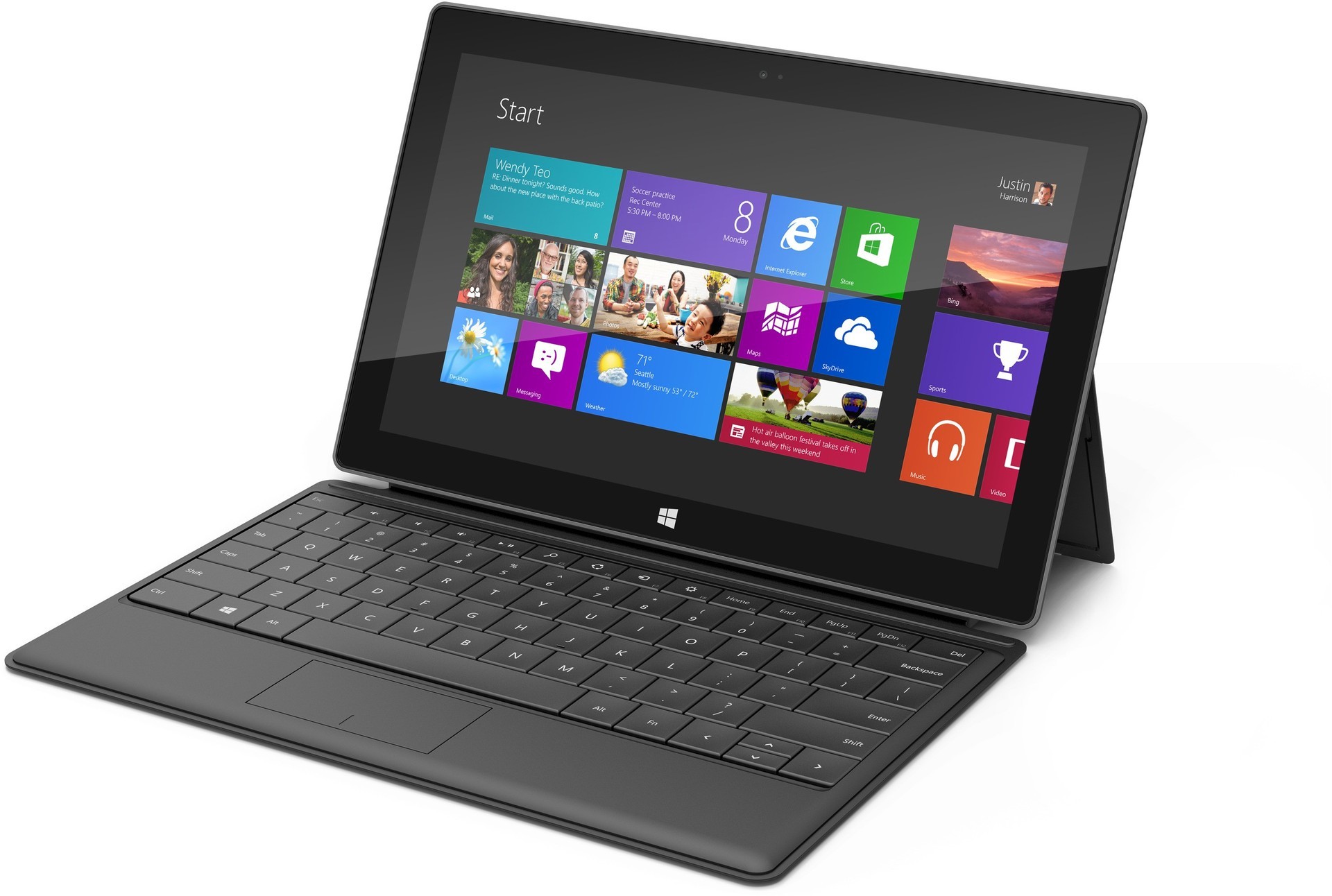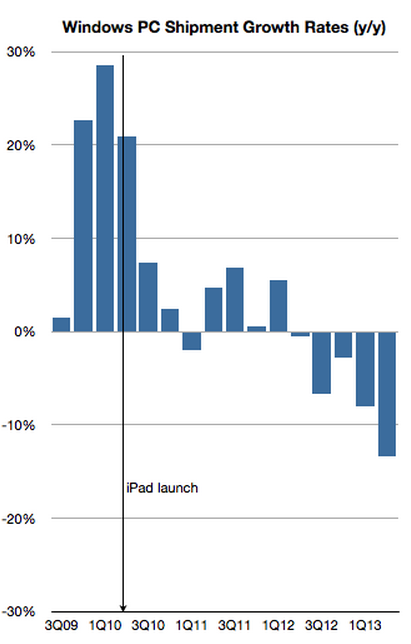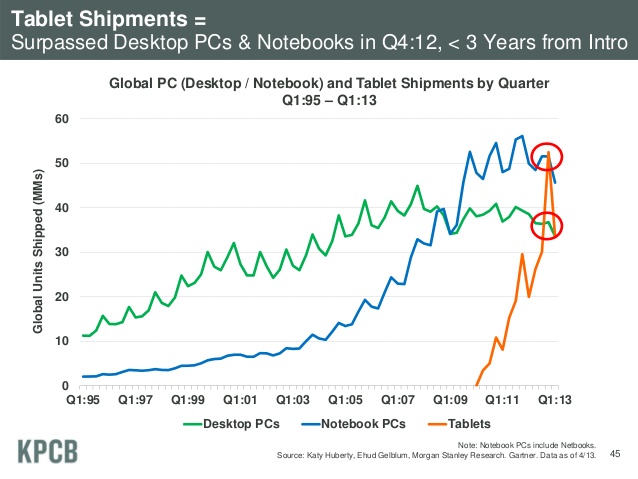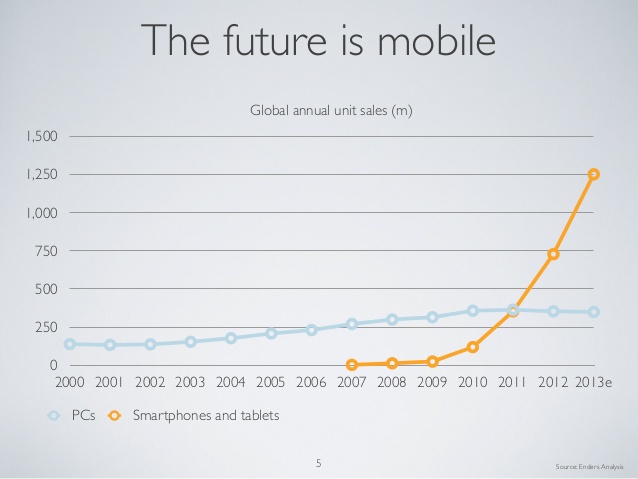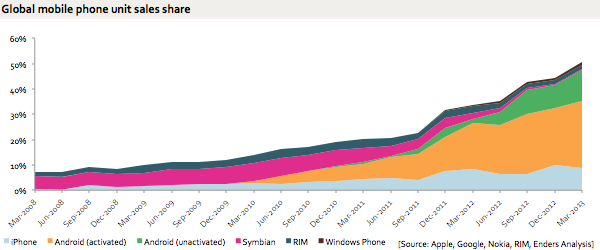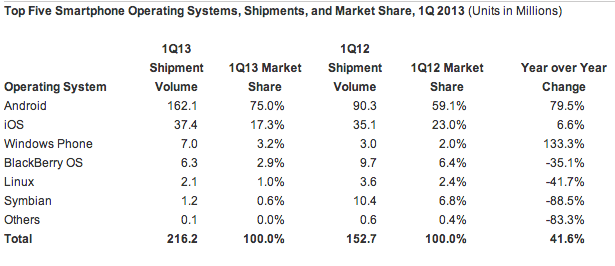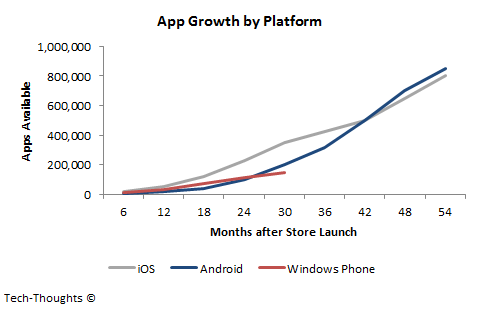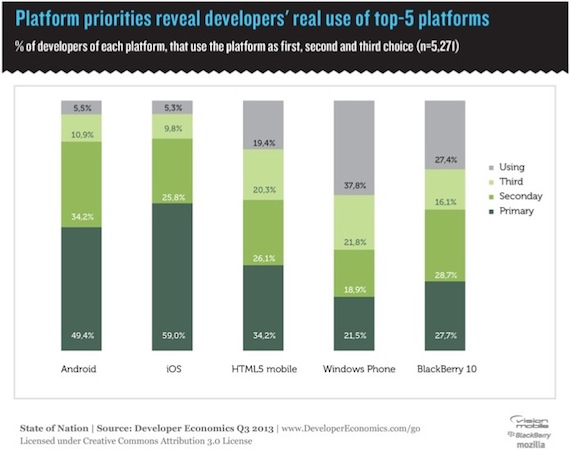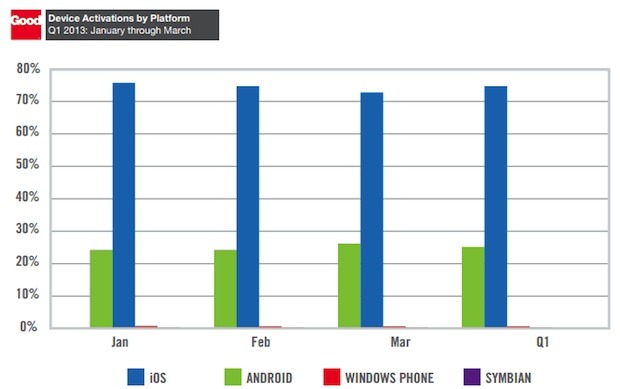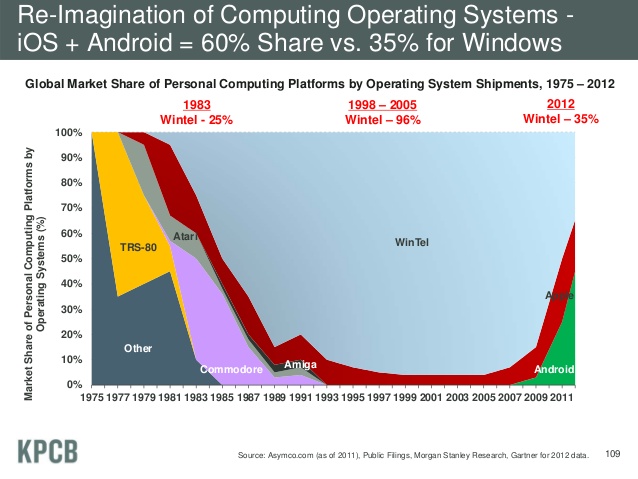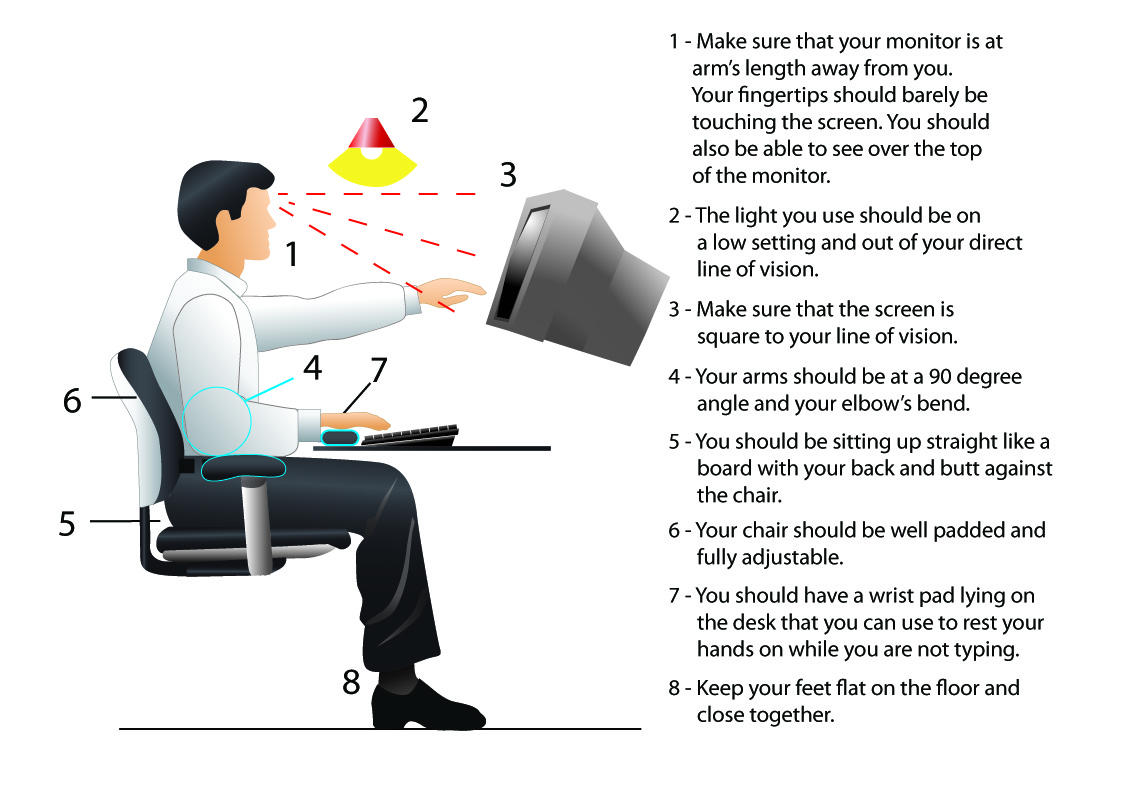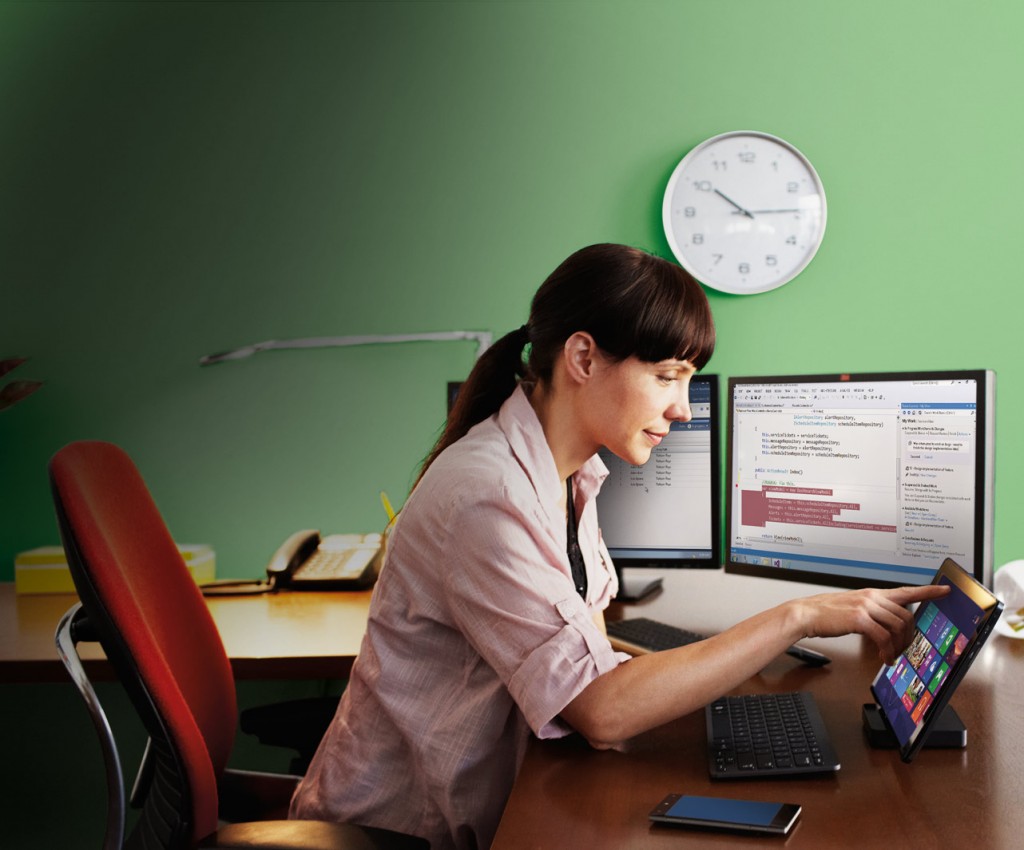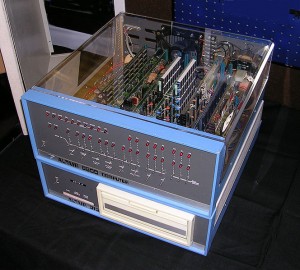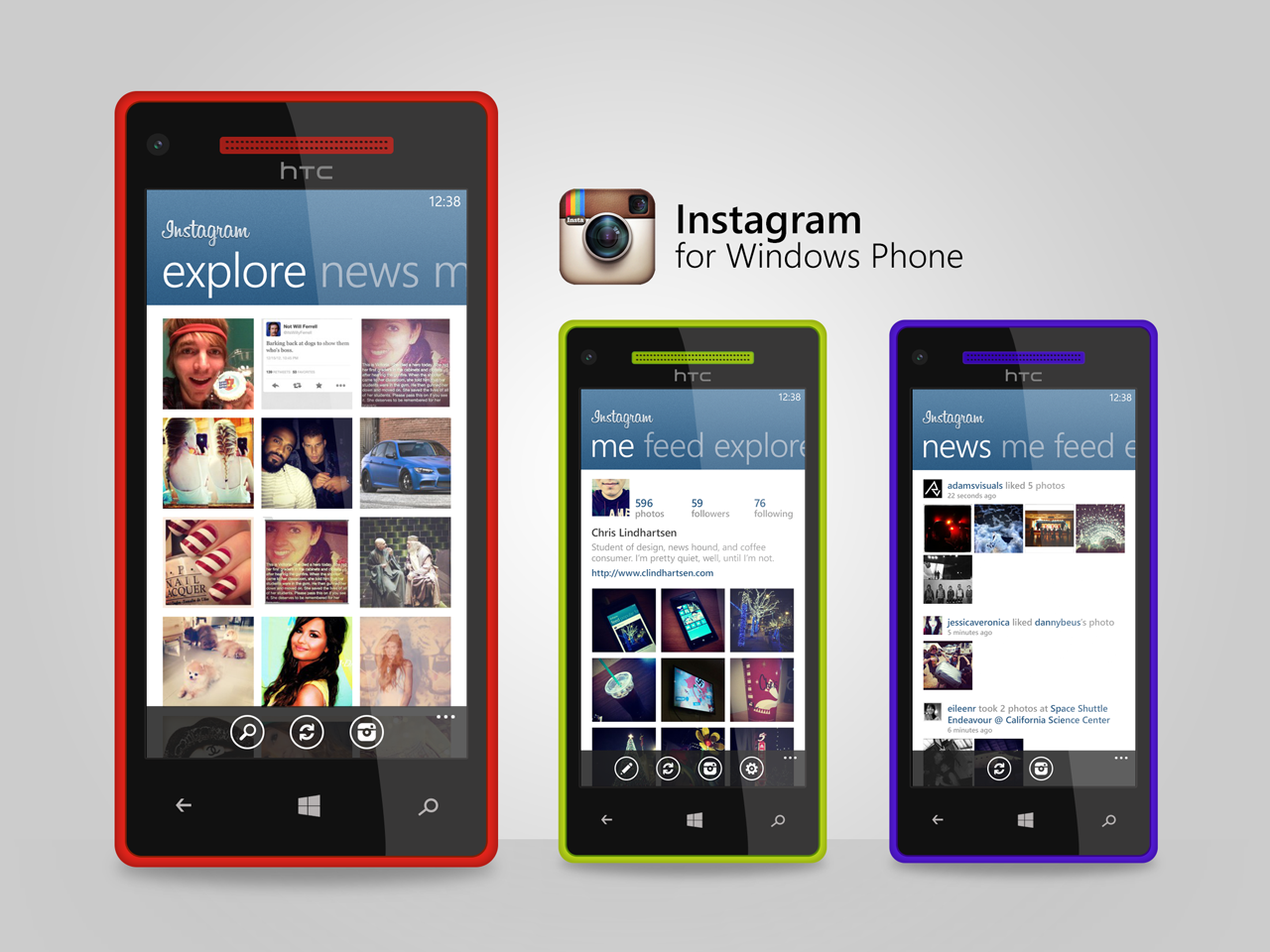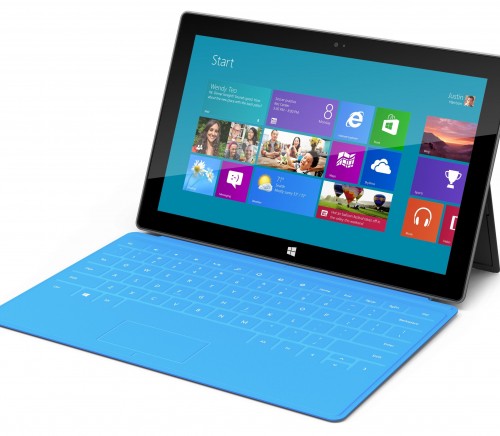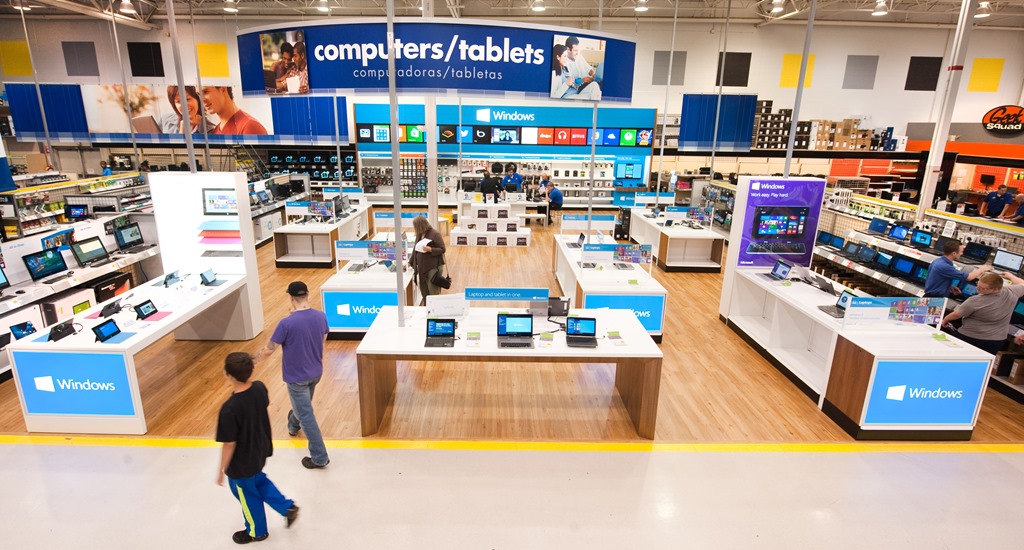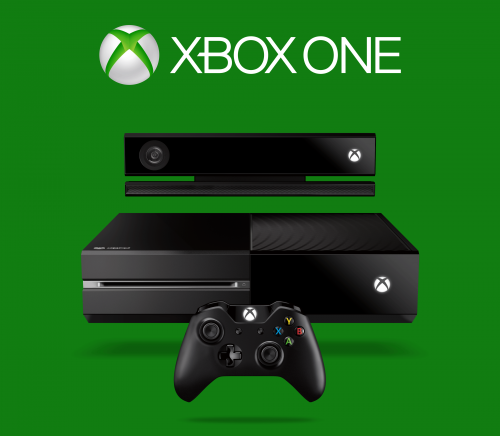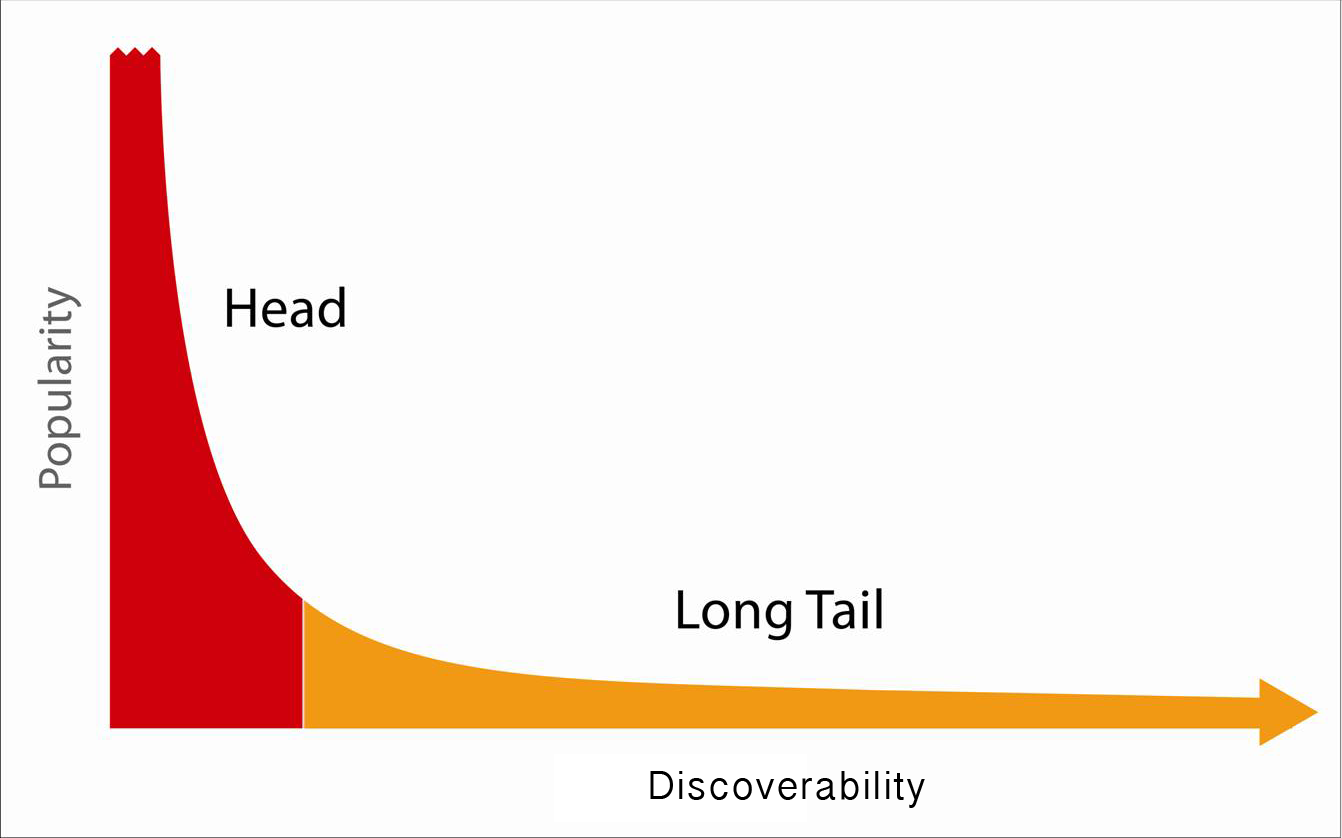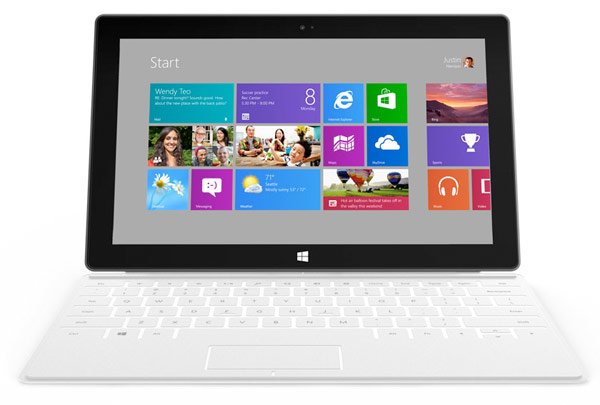This is part two of a two-part series focusing on what’s gone wrong with Microsoft Windows. If you want to read part 1, click here. If you want to know what’s gone wrong with Microsoft Windows and what its probable future will be…well, read on….
Before you criticize someone, you should walk a mile in their shoes. That way when you criticize them, you are a mile away from them and you have their shoes.
Microsoft’s Core Beliefs
A company’s actions invariably revolve around its core beliefs. What then are some of the core beliefs that helped to shape Microsoft’s most recent Windows 8 campaign?
“We don’t see things as they are, we see them as we are.” – Anaïs Nin
A) “THE WINDOWS AND OFFICE CASH COWS MUST BE PROTECTED AT ALL COSTS.”
The advantages inherent in protecting the company’s biggest moneymakers is obvious. (The disadvantages, on the other hand, are far more obscure.) Focusing on what the company is especially good at – and where most of the company’s monies are made – is the default strategy of almost all businesses.
If the company is doing something well, then the norm is to keep on doing what they’re doing – only more of it.
“Nothing is more important at Microsoft than Windows.” — Steve Ballmer, CES 2012 Keynote
B) “THE WINDOWS’ BRAND IS VERY VALUABLE.”
Microsoft sincerely believes that the “Windows” Brand is both beloved and valuable. It only make sense then for Microsoft to leverage the value of that Brand by slapping it onto nearly everything they make.
“Convictions are more dangerous enemies of truth than lies.” ~ Nietzsche
C) “WE CAN DO IT TOO AND WE CAN DO IT MUCH, MUCH BETTER THAN YOU.”
Two classic business strategies are the “first mover” and the “fast follower”. I’d classify Microsoft as a “slow follower”. Microsoft seems to believe that the best way to compete in new markets is to do what the new product leader is doing…only do it better. Microsoft waits until a clear market winner has emerged and then they try to jump in, mid-race.
The obvious advantage to such a strategy is that Microsoft is able to wait and identify which markets are going to be winners. They can also learn from the mistakes of those who went before them and incorporate those learnings into their own, subsequent, product offerings.
Most importantly, Microsoft believes that their late start can be overcome by their superior technological know-how — aided, of course, by leveraging their existing Windows and Office monopolies and by exploiting their huge cash reserves. Such a belief reveals the incredible sense of self-confidence that Microsoft has in its own abilities. Some might call it hubris, but in Microsoft’s defense, their seemly arrogant strategy has been validated by past successes.
Microsoft dominated personal computing for 25 years. For many, many of those years, they controlled 95% of the personal computing market – a monopoly that is virtually unheard of without the assistance of government mandates. In computing, Microsoft was the very embodiment of the allegorical 900 pound gorilla. What Microsoft wanted, Microsoft took.
For example, Microsoft was late to the internet market, but when they put their mind and muscle to it, they slowly, but surely, smushed their Netscape internet challenger and made their own Internet Explorer THE default internet browser for the vast majority of personal computer users.
Similarly, Microsoft was a very new entrant in a very old gaming console market, but when they put their full weight behind the Xbox, they eventually (after going 5 billion dollars in the hole) became the gaming console market leader. Is there any other company that has the patience, perseverance or cash reserves necessary to follow such a strategy?
Microsoft won the internet wars and the console wars, and they did it with sheer brute force. When you are as big and as strong and as successful as Microsoft, is it any wonder that you think highly of your own abilities?
“An old belief is like an old shoe. We so value its comfort that we fail to notice the hole in it.” ~ Robert Brault
D) “THE MICROSOFT OFFICE SUITE IS THE KILLER APPLICATION, BOTH IN DESKTOP AND MOBILE COMPUTING.”
The Office Suite gives Microsoft a huge strategic advantage in the notebook and desktop markets. Microsoft Office wasn’t the first killer application, but it is the biggest, baddest suite of killer applications of our time.
Microsoft believes that Office is their ace in the hole in the mobile wars. The other mobile platforms may have a large lead in apps, but the Office Suite is the killer app that levels the playing field.
When in doubt, observe and ask questions. When certain, observe at length and ask many more questions. ~ George S. Patton
E) THE TABLET IS MERELY ANOTHER (LESS PRODUCTIVE) KIND OF PC.
Microsoft has always insisted that the tablet is simply another kind of PC. Microsoft contends that tablets alone don’t cut it. What people really want is a productive tablet, a two-in-one device that serves as both a tablet and a notebook, a hybrid that “powers people on-the-go for the activities people really value.”
A belief is not true because it is useful. ~ Henri Frédéric Amiel
Strategy
I believe Microsoft wanted to both differentiate Windows 8 from the offerings of their competitors and to strike at their competitors where they were the most vulnerable. This is a classic strategy known as “exploiting the line of least resistance.” Walmart parlayed this strategy into an empire by initially building their mega-stores in rural areas that their competitors found unprofitable.
Exploit the line of least resistance – so long as it can lead you to any objective which would contribute to your underlying object. ~ B.H. Liddell Hart, Strategy
Microsoft’s line of least resistance was – hybrid computers. In strategic terms, hybrids offered Microsoft a wealth of opportunities. First, no one else was seriously competing there. Second, Windows 8’s dual OS was the seemingly perfect hybrid operating system. Third, hybrids were a natural bridge that could be used to migrate Microsoft’s huge existing desktop customer base onto and into the burgeoning tablet market space.
In strategic terms, Microsoft was partially successful.They did go where Apple and Android were not – which is the beginning of a good strategy. However, they also went where the market was not.
Microsoft exploited the line of least resistance, but the reason it was the line of least resistance was because it didn’t lead to a meaningful objective. It does one no good to exploit a pass unguarded by the enemy if the reason the enemy left that pass unguarded was because it led to nowhere.
A girl phoned me the other day and said, “Come on over; nobody’s home.” I went over. Nobody was home. ~ Rodney Dangerfield
Following the line of least resistance is good strategy – but only if it takes you to your desired goal.
Microsoft’s Windows 8 Campaign
In their Windows 8 campaign, Microsoft made (at least) four key strategic decisions:
1) Create their own (Surface) hardware, but continue to license their operating system software to third-party manufacturers too.
2) Create three separate operating systems for the phone, tablet and desktop, then attempt to unify all three under one name and one user interface.
3) Start a brand new, incompatible, tablet platform named “RT” and supplement it with software from the existing Windows Office Suite.
4) Create a dual OS operating system that would work on tablets, notebooks and desktops but be tailored to run on tablet/notebook hybrids.
Every one of Microsoft’s major campaign decisions contains an inherent contradiction, an internal inconsistency, a self-destructive insistence on having things “both ways”. Let’s see how these decisions played out in practice.
You can’t dance at two weddings at the same time; nor can you sit on two horses with one behind. ~ Yiddish proverb
1) CREATE THEIR OWN HARDWARE, BUT CONTINUE TO LICENSE THEIR OPERATING SYSTEM SOFTWARE TO THIRD-PARTY MANUFACTURERS TOO.
1.1) Microsoft’s share of connected devices sales (in effect, PCs plus iOS and Android) collapsed from over 90% in 2009 to under 25% today.

Source: Benedict Evans
Microsoft is painfully aware of the fact that their Windows operating system is rapidly sliding from monopoly status to third place, behind Android and iOS.
“If things go wrong, don’t go with them.” – Roger Babson
1.2) Microsoft’s smart phone licensing strategy has been an utter disaster. Not only is Microsoft’s share of the smart phone market tiny, but Microsoft can’t charge the consumer for the operating system like it does on the PC, and Microsoft’s royalty fees from licensing the Windows Phone OS to manufacturers like Nokia, HTC and Samsung are being given back to these companies in the form of marketing dollars.
1.3) In light of these facts, Microsoft decided to adopt Apple’s integrated model and make their own hardware as well as their own software.
When people are free to do as they please, they usually imitate each other ~ Eric Hoffer
Microsoft is virtually telling the world “Our business model works great — except when it doesn’t.”
1.4) The good news is:
— Vertical integration allows Microsoft to better control the user experience from start to finish. ((“What this reorganization makes clear is that Microsoft now thinks it will have to control its own destiny: no longer will it depend on Intel for the computing power, Dell for manufacturing expertise, or HP for marketing heft (and, lest we forget, all of them for its technical support) to get its technologies in front of the public.”))
— It enables Microsoft to make money on hardware.
— It puts Microsoft in a position to directly compete with Apple. ((Microsoft CEO Steve Ballmer told CRN in an exclusive interview Monday that the company’s Surface tablet marks a new era in which the computer software giant will leave no “stone unturned” in its innovation battle against Apple.))
1.5) Make no mistake about it, this is a fundamental shift in the company’s business model, and it could absolutely end up backfiring.
— Microsoft has decided that third-party hardware manufacturers are part of the problem, and not part of the solution.
— Microsoft has stripped funding from its partners and reallocated it to their own hardware efforts. ((“Microsoft’s marketing budgets that are allocated so far for Q2 2013 include absolutely no support for Windows Phone partners.”))
— Microsoft’s strategy distances their interests from the interests of their hardware partners, such as Acer, ((Acer won’t do Windows Phone this year, wants Microsoft to pick up the pace.)) Samsung, ((Something Else Revealed At Samsung’s Launch Event: Disdain For Windows RT.)) Nokia, ((Nokia pulls plug on Windows RT tablet, signals end MSFT)) device makers based in Asia, ((Device makers based in Asia are not keen on Windows RT. That has become painfully clear.)) and trade shows such as Computex. ((One year after debut, Windows RT is a Computex no-show.))
— Microsoft’s policy encourages their hardware partners, such as AMD, ((After years of Windows OS exclusivity, Advanced Micro Devices is opening the door to design chips to run Google’s Android and Chrome OS in PCs and tablets.)) to migrate to Android. ((Android has become a hedge against Microsoft and Windows.))
— Hardware is – no pun intended – hard. Probably a lot harder than Microsoft thought. ((Switching from software to hardware, however, is proving very hard. I’m sure quite a bit harder than (Microsoft’s) management thought.))
— All of this hardware diversification is causing massive customer confusion. Quoting from “Making Sense of All the New Laptop Flavors“:
“Milunovich cites the two different models of Microsoft’s Surface — the ”RT” model running on an Nvidia (NVDA) microprocessor, and the … “Pro” model running on Intel‘s (INTC) microprocessor, as one prominent instance of possible “confusion among consumers relating to software versions and the herd of vendors churning out product.”
“Milunovich thinks the increasing diversity in tablets offered on the market plays to Apple’s advantage, because “user confusion favors Apple given its leading brand, relatively simple product line, and retail store support,” he argues.”
1.6) The entire exercise is counter-productive. The Surface RT and the Surface Pro are not taking sales away from iOS and Android devices. If anything, Microsoft’s hardware is cannibalizing their partner’s Ultrabook sales. ((“Surface Pro is really a PC, and potential buyers will also be considering notebooks and ultrabooks.” noted Moorhead.)) What purpose does that serve?
“A house divided against itself cannot stand.” ~ Abraham Lincoln
2) “CREATE THREE SEPARATE OPERATING SYSTEMS FOR THE PHONE, TABLET AND DESKTOP, THEN ATTEMPT TO UNIFY ALL THREE UNDER ONE NAME AND ONE USER INTERFACE.”
It has always been the dream of programmers to use one underlying code base to run software everywhere. Microsoft has turned that dream on its head and has, instead, devised a scheme that uses three, wholly separate and incompatible phone, tablet and desktop code bases, to run one, seemingly self-same, user interface.
Microsoft has gotten it completely backwards.
Try imagining using one user interface on three different form factors. For example, would you want the same user interface on your bicycle, your motorcycle and your car? On a trowel, a shovel and a backhoe? On a cork-board, a blackboard and a scoreboard? Even the iPad – which critics view as “merely a big iPod touch” – employs a separate user interface from that of the iPhone.
The form factor should not be tailored to the user interface. It’s the other way around. The user interface should be tailored to the form factor. In Microsoft’s desire to have one user interface across all of their Windows devices, they forgot about the most important thing – the user experience.
“How many legs does a dog have if you call the tail a leg? Four. Calling a tail a leg doesn’t make it a leg.” – Abraham Lincoln
How many operating systems do you have if you call them all “Windows 8”? Three. Calling three operating systems by one name does not make them one operating system.
3) “START A BRAND NEW, INCOMPATIBLE, TABLET PLATFORM NAMED “RT” AND SUPPLEMENT IT WITH SOFTWARE FROM THE EXISTING WINDOWS OFFICE SUITE.”
3.1) Microsoft knew that Windows RT was starting at a severe disadvantage to the incumbent tablet makers. It was late, late, late in the platform game and their iOS and Android competitors had literally racked up millions of competing mobile apps. What to do, what to do?
Well, here’s a couple of things that you should probably not do when launching a brand new platform:
— Call your new platform “RT” for “Run Time. (I mean…are you kidding me?)
— Craft your tablet advertising campaign around…a keyboard? RT is supposed to be a tablet platform, right? Focusing tablet advertising on the keyboard is like focusing car advertising on the trailer hitch.
— Introduce the platform with virtually no native software.
— Introduce a platform that doesn’t run Windows 8 applications on the very same day that you introduce Windows 8.
— Make it hard for App developers to know where they’re supposed to focus. (Windows Phone 8, Surface RT, Windows 8?)
— Osborne yourself by telling potential customers that you will be, in a few months, releasing a Windows Pro tablet that will do everything that the RT tablet does not.
— Introduce your platform with no clear message, no clear identity and no clear use case.
You have two systems (and operating systems) that look the same and run some of the same apps, but aren’t the same. ~ Mashable
Let me put this to you, the reader. Can you adequately explain the difference between Windows RT and the Windows Pro in a sentence? In a paragraph?
Neither can Microsoft.
If you want to give God a good laugh, tell Him your plans. ~ Yiddish proverb
3.2) Microsoft thought that the Office Suite would be the killer app that would drive sales of the RT platform. But does RT’s ability to run the Office Suite make up for its inability to run the 199,999 apps it’s missing? Not hardly.
Office is not the killer app that Microsoft thinks it is. Non-Microsoft competitors are already far more useful on touch devices. Porting the desktop Office to the touchscreen device is merely an exercise in futility. ((Microsoft Office for the iPhone Is Here. Yawn. / Office for iPhone downloads start with a bang, but fizzle before 4th; Office Mobile for iPhone: Why? / Microsoft Doesn’t Seem To Be Fooling Anyone With Its New Office For iPhone App / Office for iPhone is a belated, ambivalent move, analysts say / Microsoft Office not worth wait / Microsoft’s Office For iPhone: Wrong Product, Wrong Market))
Microsoft’s Office gambit has failed. If you really want Office on your computer, RT is not the solution for you. You’ll be far happier with a Windows laptop or desktop.
Most manufacturers have already dropped plans for developing Windows RT-based products, given the timid sales of their first batch, due to the limited number of applications for the platform. Microsoft’s second Surface RT tablet might be the sole king of a barren land.
“A half-baked idea is okay as long as it’s in the oven.”
4) “CREATE A DUAL OS OPERATING SYSTEM THAT WILL WORK ON TABLETS, NOTEBOOKS AND DESKTOPS BUT WILL BE TAILORED FOR TABLET/NOTEBOOK HYBRIDS.”
4.1) Microsoft seems to truly believe that tablets are underpowered, unproductive devices and that people don’t really want to use them. Of course, this completely ignores the success of the iPad, but let’s set that aside for the moment.
Microsoft believes that what people really want is a single device that they can use to get serious work done; what people really want is a hybrid that does it all; what people really want is a replacement for both the PC and the iPad. According to Microsoft, ordinary people may need to use a tablet here and there, but what they really want in a tablet is the power of a PC and a PC powered by Microsoft Windows.
Microsoft’s products and advertising say it loud and say it proud:
— Two operating systems are better than one;
— A two-in-one device is twice as good as owning two separate devices; and
— A dual Operating System that runs on tablets and desktops and hybrids (oh my!) is the best of all possible worlds!
Whenever you look at a piece of work and you think the fellow was crazy, then you want to pay some attention to that. One of you is likely to be, and you had better find out which one it is. It makes an awful lot of difference. ~ Charles Franklin Kettering
4.2) Only, here’s the rub. All of Microsoft’s assertions and assumptions fly in the face of reality.
— No single manufacturer has successfully combined a full PC with the form factor of a tablet and made it work. That should be telling you something.
— The Windows 8 interface baffles consumers.
— People don’t want to use apps on their desktop PC. People don’t want a two-in-one device or touchscreen on their PC. People don’t want a tablet OS with the desktop OS bolted on. People don’t want a tablet on their PC.
— People don’t want legacy Windows applications on their tablet. People don’t want a two-headed OS on their tablet. People don’t want a desktop computer on their tablet.
— People don’t want an all-in-one computer. People DO want multiple connected devices
“Many users are realizing that everyday computing, such as accessing the Web, connecting to social media, sending emails, as well as using a variety of apps, doesn’t require a lot of computing power or local storage,” said IDC analyst Loren Loverde. “Instead, they are putting a premium on access from a variety of smaller devices with longer battery life, an instant-on function, and intuitive touch-centric interfaces.” ~ AllThingsD
The market has voted: Tablets that are just tablets are trouncing Microsoft’s hybrid tablet/PC devices.
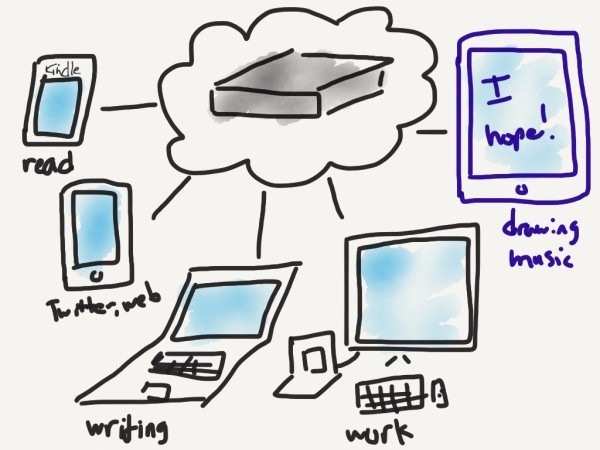
PCs are like Humpty Dumpty; they are being broken into pieces and won’t be put back together again. ~ Stratechery
4.3) The sad thing is, Microsoft knew better.
Mossberg: What’s your device in five years that you’ll rely on the most?
Gates: I don’t think you’ll have one device. I think you’ll have a full screen device that you can carry around and you’ll do dramatically more reading off of that – yeah, I believe in the tablet form factor – and then we’ll have the evolution of the portable machine and the evolution of the phone will both be extremely high volume, complimentary, that is if you own one you’re likely to own the other… ~ AllThingsD, 2007
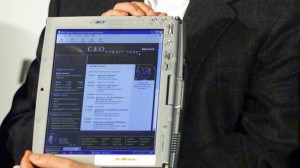 Bill Gates saw the future, but he – and Microsoft – abandoned their vision in an attempt to salvage their Windows empire. The future, they knew, was multiple connected devices. But that future had touch operating systems – not Windows operating systems – at its core. And Microsoft couldn’t have that.
Bill Gates saw the future, but he – and Microsoft – abandoned their vision in an attempt to salvage their Windows empire. The future, they knew, was multiple connected devices. But that future had touch operating systems – not Windows operating systems – at its core. And Microsoft couldn’t have that.
Windows 8 is not an attempt to create the future of computing.
Windows 8 is an attempt to preserve Microsoft’s past.
Vision without action is daydream. Action without vision is nightmare. ~ Japanese proverb
Conclusion
“If you cannot answer a man’s argument, all it not lost; you can still call him vile names.” – Elbert Hubbard
Are Microsoft’s Windows 8 problems fixable or are they intractable?
— So long as Microsoft does both hardware and software, either Microsoft’s hardware sales, or the hardware sales of their partners, or both, will suffer.
— So long as Microsoft has 3 different operating systems, Developers and app development will suffer.
— So long as RT tries to use the Office Suite as a substitute for native apps, RT sales will suffer.
— So long as Microsoft’s tablet OS runs dual operating systems tailored for hybrids, their tablet sales (and their tablet owners) will suffer.
Post-PC does not mean no PC. It means that the PC is no longer the dominant device; the center of the computing world.
It is a certainty that Microsoft Windows will continue too. But it is just as certain that it will no longer be the dominant operating system. And unless Microsoft radically changes its strategy – which I highly doubt – Window’s will not be vying for dominance – it will be vying for relevance.
One meets his destiny often in the road he takes to avoid it. ~ French proverb

Whose funeral is this, anyway?


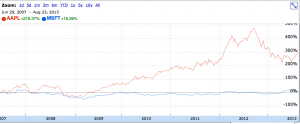
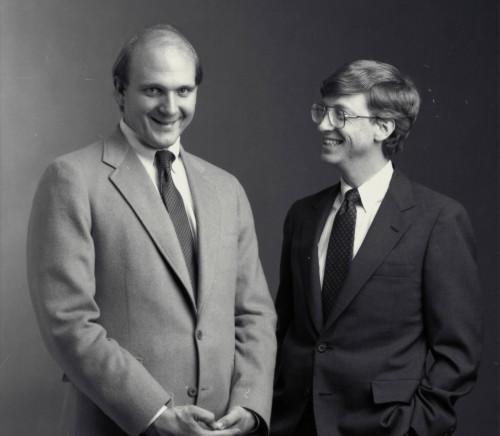




 Bill Gates saw the future, but he – and Microsoft – abandoned their vision in an attempt to salvage their Windows empire. The future, they knew, was multiple connected devices. But that future had touch operating systems – not Windows operating systems – at its core. And Microsoft couldn’t have that.
Bill Gates saw the future, but he – and Microsoft – abandoned their vision in an attempt to salvage their Windows empire. The future, they knew, was multiple connected devices. But that future had touch operating systems – not Windows operating systems – at its core. And Microsoft couldn’t have that.
